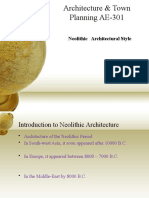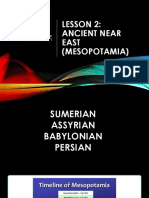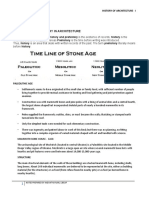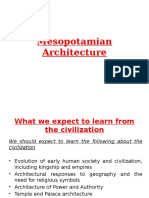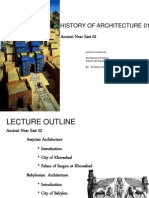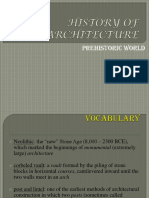0% found this document useful (1 vote)
319 views2 pagesNeolithic Architecture
Neolithic architecture emerged as hunter-gatherer societies transitioned to permanent agricultural settlements during the Neolithic period. Dwellings evolved from simple structures made of perishable materials like wood and hides to more complex stone and clay buildings organized within planned villages. Notable Neolithic constructions included megalithic monuments like Stonehenge, which served ceremonial purposes. The development of specialized architecture demonstrated increasing social complexity, urban planning, and use of architecture to express cultural identity. Neolithic innovations in construction established foundations for later architecture and urban design.
Uploaded by
maria.23250074Copyright
© © All Rights Reserved
We take content rights seriously. If you suspect this is your content, claim it here.
Available Formats
Download as PDF, TXT or read online on Scribd
0% found this document useful (1 vote)
319 views2 pagesNeolithic Architecture
Neolithic architecture emerged as hunter-gatherer societies transitioned to permanent agricultural settlements during the Neolithic period. Dwellings evolved from simple structures made of perishable materials like wood and hides to more complex stone and clay buildings organized within planned villages. Notable Neolithic constructions included megalithic monuments like Stonehenge, which served ceremonial purposes. The development of specialized architecture demonstrated increasing social complexity, urban planning, and use of architecture to express cultural identity. Neolithic innovations in construction established foundations for later architecture and urban design.
Uploaded by
maria.23250074Copyright
© © All Rights Reserved
We take content rights seriously. If you suspect this is your content, claim it here.
Available Formats
Download as PDF, TXT or read online on Scribd
/ 2
